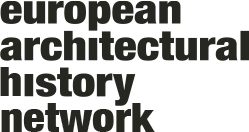The inaugural session of RHAM, Research Network on the History of Architecture in Morocco, 20th-21st Centuries (Réseau de recherche sur l’histoire de l’architecture au Maroc aux XXe-XXIe siècles, https://rham.
RHAM members (https://rham.hypotheses.org/
A History of “Post-Independence” Architecture
This session focuses on a specific period in Moroccan history: the three decades following Moroccan independence, spanning from 1956 (the year of independence) to 1986 (the year of His Majesty Hassan II’s speech to architects’ representatives, coinciding with the first graduating class of the Ecole Nationale d’Architecture of Rabat). This period, which has been largely underexplored in the existing literature on the colonial era, is now garnering increasing interest, as evidenced by the research conducted by RHAM members such as Lahbib El Moumni, Nadya Rouizem, Ben Clark, Michèle Tenzon, Sara Frikech, Daniel Williford, and others. In light with this, the first session of RHAM aims to bring together diverse approaches to studying the history of architecture, landscape, urban planning, and regional development during the post-independence period.
Axis 1: Trajectories of Actors
Within this first axis, our objective is to trace the international trajectories of various actors who have significantly influenced the history of architecture, landscape, and urban planning in Morocco between 1956 and 1986. We aim to focus on actors who have not yet received comprehensive research attention. These actors include architects, but also other professionals such as engineers and experts who often operate under the radar (Lagae and De Raedt, 2014). Additionally, we will explore the role of institutional actors, including international organizations and construction companies. We will also examine the significance of foreign training institutions, such as the École des Beaux-Arts or the École Spéciale d’Architecture in Paris, in shaping the education of the initial generations of Moroccan architects practicing in Morocco.
Axis 2: Circulation of Knowledge and Techniques
The second axis focuses on the material and constructive aspects of the history of architecture and urban planning in Morocco during the specified period. This approach aligns with the discipline’s recent attention to the relationship between materiality and architectural and urban forms (Williford, 2020; Rouizem, 2022). By exploring the circulation of knowledge and techniques, we aim to identify the process of “selective adaptation” or hybridization of models and knowledge (Avermaete and Casciato, 2014). In this context, a historical analysis of construction techniques, materials, and associated knowledge can uncover the patterns of circulation, transfer, and reappropriation of technologies. This approach will shed light on several decades of material and architectural experimentation in the Moroccan context. We will investigate the knowledge and techniques that have circulated, examine how they have been adapted and reappropriated, and explore the new architectural and urban forms they have engendered.
Terms of Submission
Paper proposals in either French or English (300-word abstract, short bibliography, and a maximum 100-word biography) should be submitted before September 30, 2023, to the following email address: reseaurham@gmail.com. The proposals will be evaluated by the Scientific Committee and the Organizing Committee (see below). Upon acceptance, the final paper (maximum 3,500 words) must be submitted by January 15, 2024.
The session will be held in February 2024 at the Centre Jacques Berque (CJB) in Rabat. Following the symposium, selected papers may be published by the Centre Jacques Berque. The day after the session, there will be a meeting of RHAM members at the Centre Jacques Berque (CJB) to discuss the future of the network.
For any inquiries, please contact: reseaurham@gmail.com
Calendar:
- Call for papers launch: July 15, 2023
- Deadline for abstract submission: September 30, 2023
- Notification to authors: October 30, 2023
- Submission of final papers: January 15, 2024
- Session: February 20, 2024
